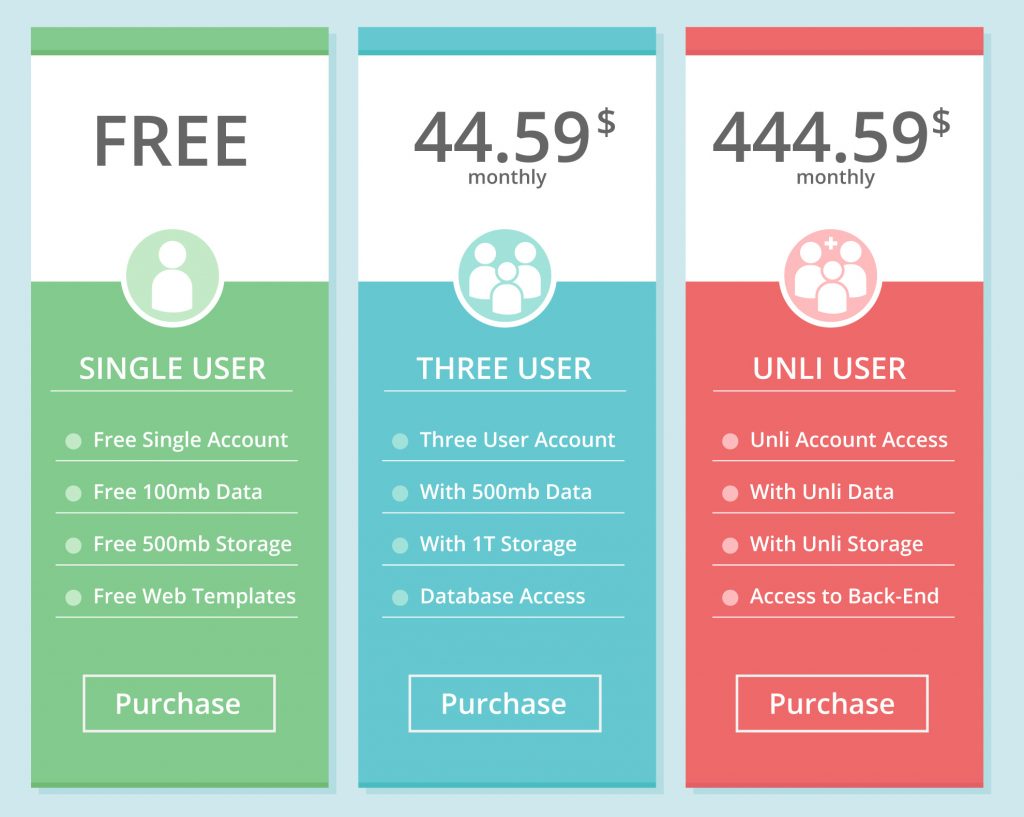When diving into the world of software or digital services, many entrepreneurs find themselves considering the Freemium model. While this business model seems to be everywhere, many people still are not sure how it actually works and why it is so popular. In this article, we’ll break down what the freemium business model is and exactly how it works. We’ll also discuss some of the advantages and disadvantages of this model.
What is the Freemium Business Model?
The freemium model is a clever mix of ‘free’ and ‘premium’ where you offer a basic version of your product for free and charge for the fancier, feature-rich version. The beauty of this strategy is its ability to pull in a wide range of customers with the free option and then tempt a portion of them to splurge on the premium version with its additional, more enticing features.
This method is growing in popularity, embraced by some of the most well-known companies on the planet. Its main charm? It builds a huge user base without breaking the bank. The free version is a safe bet for those not ready to commit financially, making it ideal for products or services that people prefer to try before buying. Plus, the Freemium model cleverly taps into revenue from both the free and premium user groups. While many might stick to the free version, there’s always a group ready to pay for more bells and whistles, balancing the costs.
However, it’s not all smooth sailing. The trick is to find the perfect middle ground between the free and premium versions. Too little in the free version, and no one will want to upgrade. Too much, and no one will need to.
Examples of the Freemium Model
Most likely, you’ve already used a product or service that utilizes the freemium model. You may have even decided that a premium version fits your needs after trying the free version. This ease into a product is one of the reasons why the freemium model works so well. Let’s look at six businesses you may already know of that are using the freemium model:
- Spotify: Their music streaming has a free, ad-supported version. Want to get rid of the ads and get features like offline listening? That’s where their premium subscription comes in.
- Dropbox: They offer basic cloud storage for free but with a limit. If someone wants more space and better sharing options they can upgrade to the paid plan.
- LinkedIn: The go-to for professional networking offers basic access at no cost. But if a user wants deeper insights like who’s checking out their profile, their premium subscription lets them do that.
- Grammarly: Perfect for basic grammar and spell checks for free. But for the heavy-duty grammar fixing and plagiarism checks, they reserve for the premium version.
- Canva: Offering a free tier with basic features and limited templates. The paid subscription unlocks a world of more templates and custom options like custom fonts and images.
These companies smartly use the freemium model to hook a wide audience, hoping to convert some into paying customers. It’s a solid strategy if they are able to balance between free and paid perks.
Key Aspects of the Freemium Model
The heart of the freemium model is its free offering. It’s all about giving enough value to reel in customers and get them to try your product. The key here is to make sure your audience clearly gets the message about what’s great about your free version.
- Conversion Strategy: The goal here is to turn free users into paying customers. This could mean rolling out premium features, limited-time deals, or even personalized recommendations. The whole process should be seamless and enjoyable, convincing users that the premium version is worth their money.
- User Engagement: A big piece of the puzzle is keeping users hooked on your free version. This means regular updates, interactive elements, and building a community through forums or social media.
- Customization Options: Offering ways to customize both free and premium versions can really up the appeal. Limited customization in the free version gets people interested, and more extensive options in the premium version can be a major draw for an upgrade.
Next, lets take a look at the pros and cons of the freemium model to get more insight into its workings.

Freemium Model Plan Example-Image by Freepik
Advantages of the Freemium Model
The freemium model has huge potential for a startup. That is why, according to one survey of 400 mobile app developers, 54% reported using the freemium model and 33% said that this method generated the most revenue for their business. Let’s take a closer look at some of the advantages of this model.
1. Growing Your User Base
The freemium model is like a magnet for attracting a diverse crowd of users. This is all thanks to its ‘try before you buy’ approach. By giving away the basics for free, businesses can shine a spotlight on their brand. This will open the door for potential customers to check out what they offer without having to spend a dime.
Once users get a taste and like what they see, a good number of them decide to go for the full experience and become paying customers. Plus, this model is a safe playground for businesses to tweak and polish their offerings. They get to use real feedback from actual users and see how their product is being used in the real world. This phase is super important because it lets businesses fine-tune their product without the pressure of making money right away.
2. Creating a Reliable Revenue Stream
Most freemium businesses also use the subscription business model. One of the advantages of the subscription business model is the luxury of creating predictable revenue. By offering the core products for free and then charging for the extra bells and whistles, businesses create a well-balanced revenue model. This approach lessens the reliance on unpredictable revenue streams like traditional advertising, which often needs more investment and doesn’t always pay off.
What’s more, when businesses offer quality products for free, it builds a bond of goodwill and loyalty with their users. This not only helps keep a consistent user base but also nudges more of them to move to the paid versions. This is because many users are lured by the fancier features and the overall value they see in the brand.
3. Facilitating Rapid Business Growth
The freemium model is probably one of the best options for businesses looking to grow a user fast. It’s pretty straightforward: offer a free version of your product and, if it performs as expected, new users will try it out. In today’s world, where everyone’s connected online, this strategy works wonders. A single share on social media or a recommendation from a friend can make your product go viral.
A large user base can lead to a higher conversion rate to paid plans, accelerating the business’s growth. This boosts your business’s growth at an impressive pace. Plus, as we mentioned before, with more people using the product, the more feedback that is given to the business. This is valuable for any business because it helps them tweak and improve their product. As a result, this makes users even happier. In the long run, this just sets you up for even more growth.
4. Gaining Valuable Customer Insights
A significant but often overlooked advantage of the freemium model is the insight you get from users. By analyzing how users interact with the free version of their product, businesses can better understand what customers want and need.
These insights are important for developing the free and premium versions of the product. Getting to the heart of what makes users tick and what keeps them happy is key for businesses to really nail what they offer. It’s like having a secret recipe for creating experiences that people love. This data-driven approach to product development and marketing can give businesses an edge over some possible competitors.
Challenges in Monetizing the Freemium Model
While it may seem like the freemium model is the best option for many startups and businesses, it is not without its drawbacks. Here are some of the disadvantages of this model.
1. Converting Users into Paying Customers
A major hurdle of the freemium model is successfully monetizing its user base. While it’s great at drawing in many users, only a small fraction typically opt for paid plans. This gap between user attraction and conversion to paying customers poses a real challenge in generating significant revenue.
The free aspect of the base service can lead users to view the entire service as inherently without cost, reducing their willingness to pay for more features. The key, then, is making the free services attractive enough to draw in users while still leaving room for the appeal and necessity of the premium features.
2. High Operational Expenses
Operating under a freemium model can lead to higher than normal operational costs. To offer something for free, you would need significant investment in infrastructure. Things like server space, customer support, and continuous product development, for example.
Then there’s marketing. You still need to market to attract users to the free version. Some of these costs can be considerable. These expenses, along with a low conversion rate to paid plans, can make maintaining a profitable balance difficult. This financial challenge can be especially difficult for startups or smaller companies with fewer resources.
3. Sense of Entitlement Among Users
A less talked-about downside of the Freemium model is it can foster a sense of entitlement among users. Once they’ve gotten accustomed to free access, users may start expecting that all aspects of the service should remain free. Of course, this will make it harder to shift them to paid plans.
This entitlement mindset can be harmful to revenue generation. Also, it may cause user dissatisfaction if the free services are seen as insufficient or if premium features appear unfairly restricted. Sometimes, this can lead to negative reviews or criticism.
4. Undermining the Value of Premium Features
The freemium model also runs the risk of devaluing its premium offerings. If the free version meets most users’ basic needs, the incentive to upgrade to premium can be minimal. This situation can drastically weaken the perceived value of premium features, making it tough for businesses to convince users of the benefits of upgrading.
Finding the perfect balance between what’s offered for free and what’s reserved for premium is crucial as it shapes the perceived value and attractiveness of the premium features, which are central to the revenue strategy of the Freemium model.
Conclusion
While the freemium business model is good, it isn’t perfect. However, since it has been such a common and successful model for many startups and businesses over the years, you can expect to continue to see this model being used to draw in potential paying customers.
Also read:
5 Internet-based Business Models and How they Work
21 Different Types of Business Models With Examples
The SaaS Company Business Model Explained












Pingback: Pros and Cons of a Freemium Business Model for You and Your Customers - StartUp Mindset
Pingback: 7 Examples of the Freemium Business Model Working Extremely Well - StartUp Mindset
Pingback: 3 Reasons Why the Freemium Model Works - StartUp Mindset
Pingback: Freemium Business Model: Definition, Examples, and the Pros and Cons – Austin Rotter